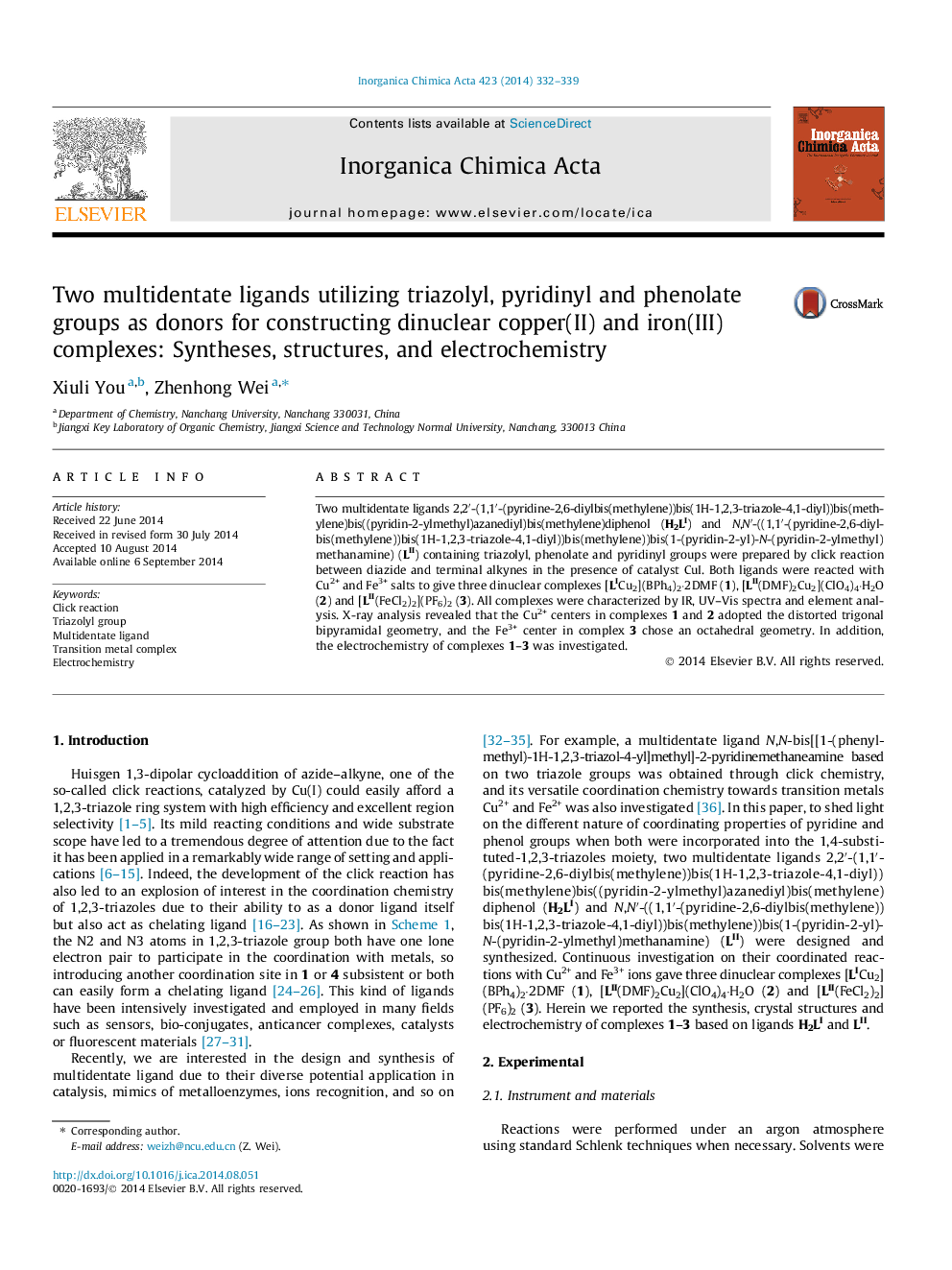| Article ID | Journal | Published Year | Pages | File Type |
|---|---|---|---|---|
| 1309476 | Inorganica Chimica Acta | 2014 | 8 Pages |
•Two multidentate ligands containing phenolate, triazolyl and pyridinyl groups were synthesized by click reactions.•The synthesis and crystal structures of three dinuclear Cu2+ and Fe3+ complexes based on the ligands were discussed.•The structure differences in the three complexes were revealed by the different coordinating donors of two ligands.•The electrochemistry of complexes 1–3 was investigated.
Two multidentate ligands 2,2′-(1,1′-(pyridine-2,6-diylbis(methylene))bis(1H-1,2,3-triazole-4,1-diyl))bis(methylene)bis((pyridin-2-ylmethyl)azanediyl)bis(methylene)diphenol (H2LI) and N,N′-((1,1′-(pyridine-2,6-diylbis(methylene))bis(1H-1,2,3-triazole-4,1-diyl))bis(methylene))bis(1-(pyridin-2-yl)-N-(pyridin-2-ylmethyl)methanamine) (LII) containing triazolyl, phenolate and pyridinyl groups were prepared by click reaction between diazide and terminal alkynes in the presence of catalyst CuI. Both ligands were reacted with Cu2+ and Fe3+ salts to give three dinuclear complexes [LICu2](BPh4)2·2DMF (1), [LII(DMF)2Cu2](ClO4)4·H2O (2) and [LII(FeCl2)2](PF6)2 (3). All complexes were characterized by IR, UV–Vis spectra and element analysis. X-ray analysis revealed that the Cu2+ centers in complexes 1 and 2 adopted the distorted trigonal bipyramidal geometry, and the Fe3+ center in complex 3 chose an octahedral geometry. In addition, the electrochemistry of complexes 1–3 was investigated.
Graphical abstractMultidentate ligands H2LI and LII containing triazolyl, phenolate and pyridinyl groups were reacted with Cu(ClO4)2 to give dinuclear complexes [LICu2](BPh4)2 (1) and [LII(DMF)2Cu2](ClO4)4 (2).Figure optionsDownload full-size imageDownload as PowerPoint slide
